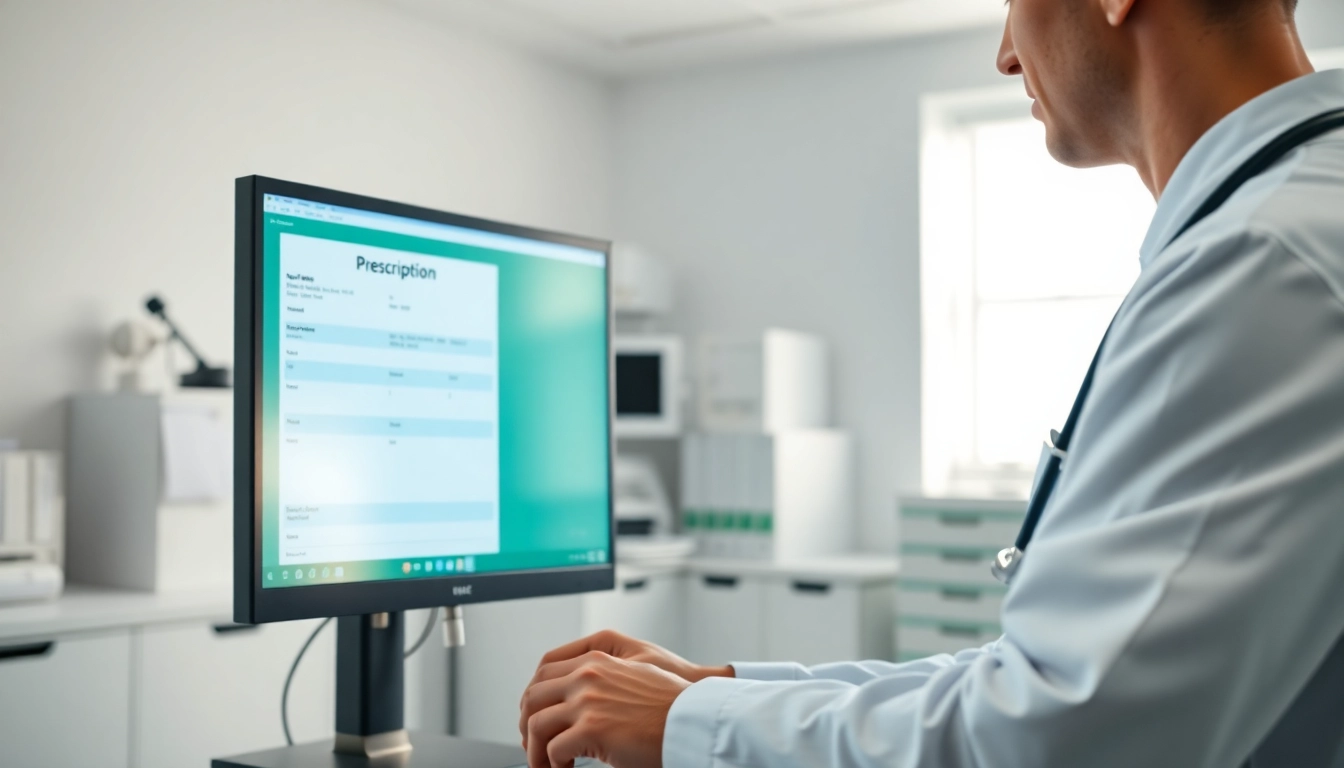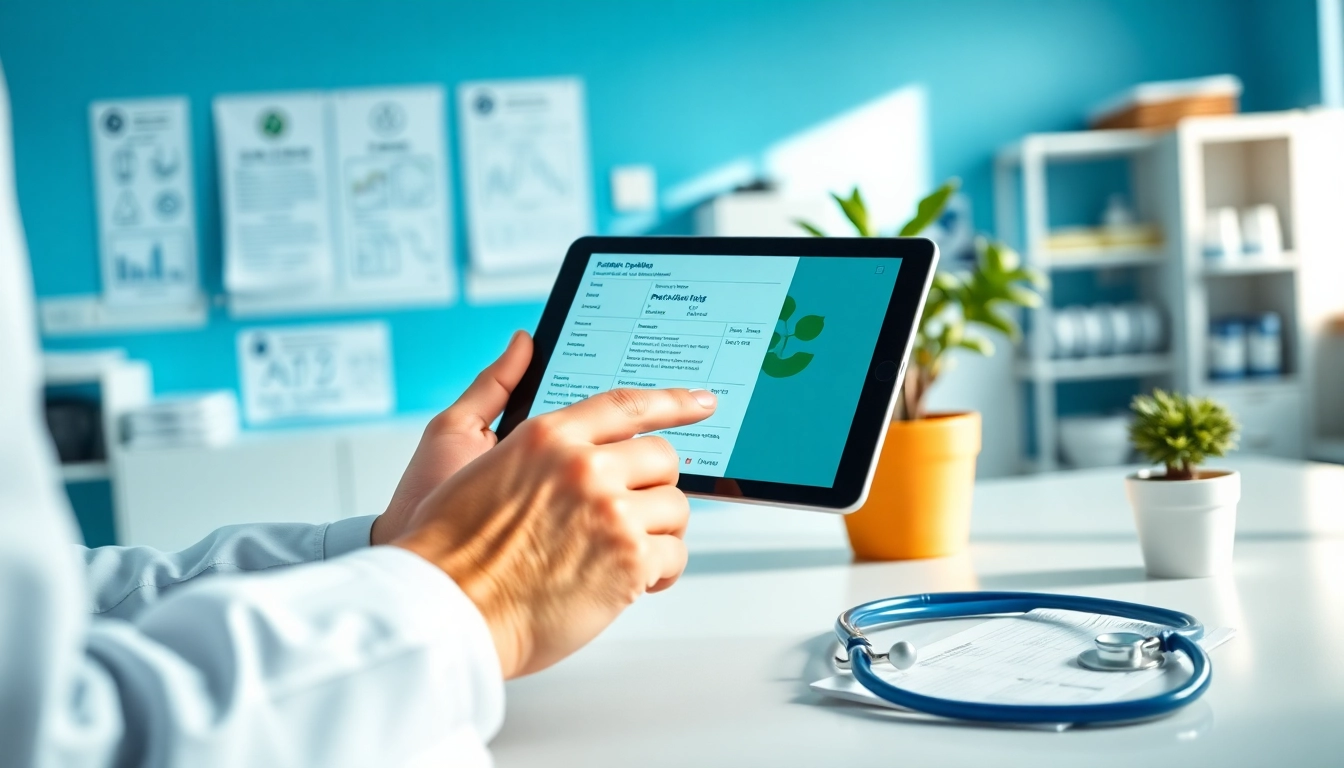Understanding Free Eprescription Apps
As digital health continues to evolve, the integration of technology into healthcare practices has become imperative. In an age where efficiency and accuracy are paramount, free eprescription apps have emerged as vital tools for medical practitioners. These applications not only simplify the prescribing process but also contribute significantly to patient care and management.
What are Free Eprescription Apps?
Free eprescription apps are digital platforms that allow healthcare providers to create, manage, and transmit prescriptions electronically. These systems are designed to replace traditional paper prescriptions and conventional verbal prescriptions, offering a more secure and efficient method of medication management. By utilizing these apps, practitioners can write prescriptions anytime, anywhere, minimizing the bottlenecks associated with traditional practices. These apps usually come with features such as medication databases, interaction alerts, refill requests, and patient history management, all aimed at improving the prescribing workflow.
The Importance of Eprescribing in Healthcare
Eprescribing represents a significant leap forward in healthcare. It plays a critical role in decreasing medication errors, enhancing communication between healthcare providers and pharmacies, and promoting patient safety. By digitizing the prescribing process, healthcare providers can reduce misunderstandings that arise from handwritten notes and verbal instructions. Furthermore, integrated systems provide real-time access to patient medication histories, allowing providers to make more informed decisions on treatment plans. In the context of the ongoing inclination towards digital health solutions, the importance of e-prescribing has never been more pronounced.
How Free Eprescription Apps Improve Patient Care
The integration of free eprescription apps into daily practice significantly impacts patient care. These applications reduce waiting times for patients, as prescriptions can be sent directly to the pharmacy without requiring in-person visits. Patients also benefit from enhanced access to their medication histories, which can lead to improved medication adherence. Moreover, by reducing the administrative burden on providers, these apps allow healthcare professionals to focus more on patient interaction and care rather than paperwork.
Key Features of Effective Free Eprescription Apps
User-Friendly Interface for Medical Practitioners
An effective eprescription app should boast an intuitive and user-friendly interface. With the variety of age and technical fluency among healthcare professionals, it is crucial to ensure that all users can navigate the system with ease. Features such as drag-and-drop functionality, easy access menus, and quick search capabilities for medications can enhance the prescribing workflow. Additionally, tutorials and online support can significantly aid less tech-savvy users in maximizing the app’s potential.
Security and Compliance in Eprescribing
Data security is paramount in healthcare, especially concerning patient information. Eprescribing apps must adhere to stringent regulations such as the Health Insurance Portability and Accountability Act (HIPAA). Features like end-to-end encryption, secure user authentication, and regular software updates are essential in protecting patient data from unauthorized access. Compliance with these regulations not only safeguards sensitive information but also builds trust, allowing patients to feel secure in their interactions with healthcare providers.
Integration with Existing Healthcare Systems
An efficient free eprescription app should integrate seamlessly with existing healthcare systems, such as Electronic Health Records (EHR) and Practice Management Systems (PMS). This integration allows for streamlined workflows, wherein patient data is readily available within the prescribing process. Systems that can interface automatically reduce the chance of errors associated with manually inputting data across multiple platforms, thereby increasing the efficiency of healthcare delivery.
Benefits of Using Free Eprescription Apps
Time Savings for Healthcare Providers
Managing prescriptions can be one of the most time-consuming aspects of a healthcare provider’s workflow. Free eprescription apps alleviate this burden by simplifying the prescribing process, allowing providers to focus more on patient care. By enabling bulk prescription processing, as well as offering rapid medication searches, these apps enable practitioners to save valuable time that can be redirected towards more patient interactions and less administrative work.
Reduced Errors and Improved Accuracy
One of the most significant advantages of e-prescribing is the dramatic reduction in medication errors. Traditional handwritten prescriptions can lead to misunderstandings and misinterpretations, especially when considering the variety of medications with similar names. With e-prescribing, accuracy is enhanced through automated alerts for drug interactions, allergies, and dosage warnings. This ensures that healthcare providers can make informed choices about medication, ultimately leading to better patient outcomes.
Enhanced Patient Engagement and Satisfaction
With the implementation of free eprescription apps, healthcare providers can enhance overall patient engagement. Patients who receive clear and timely prescriptions are more likely to adhere to their treatment plans, resulting in better health outcomes. Additionally, features that allow patients to manage their prescriptions—like easy access to refill requests or reminders—can foster greater satisfaction and trust in their healthcare provider.
Challenges and Considerations in Eprescribing
Limitations of Free Eprescription Apps
Despite their numerous advantages, free eprescription apps are not without limitations. Some applications may lack comprehensive features or may not support complex medication regimens. Additionally, free solutions might face funding or development issues, leading to inconsistencies in updates, support, and functionality compared to paid counterparts. It’s important for practices to carefully evaluate each app to ensure it meets their specific needs and those of their patients.
Data Privacy Concerns and Solutions
Data privacy is a pressing concern in healthcare today. The transition to digital systems can expose vulnerabilities if not properly managed. Healthcare providers must ensure that the chosen app prioritizes security and employs best practices for data protection. Solutions may include opting for apps with high compliance ratings, verifying encryption standards, and having formal data sharing agreements in place. Regular training on data privacy and security protocols for staff can also mitigate risks.
Technical Issues and Support Needs
Technical glitches can arise at any point, causing disruptions in the prescribing process. Providers need to have access to reliable customer support to address these challenges promptly. A robust FAQ section, user manuals, and quick troubleshooting guides can assist healthcare professionals in navigating potential issues. Regular software updates are also crucial in improving functionality and preventing compatibility problems with existing systems.
Future Trends in Eprescribing and Digital Health
Advancements in Eprescription Technology
The future of e-prescribing is poised for remarkable growth, with advancements in technology playing a pivotal role. Upcoming features such as machine learning algorithms may enhance decision-making processes by predicting potential medication interactions based on individual patient profiles. Moreover, increasing integration with telemedicine services is expected, allowing comprehensive care to occur within a single platform. This convergence will likely simplify physicians’ workflows, creating more cohesive healthcare delivery environments.
The Growing Role of Telemedicine
Telemedicine has gained considerable traction, especially in light of recent global health challenges. As more patients begin utilizing virtual healthcare services, the need for sophisticated e-prescribing solutions that integrate effectively with telehealth platforms becomes increasingly important. The synergy between e-prescription tools and telemedicine can deliver timely drug prescriptions and facilitate ongoing patient management, allowing for a seamless virtual healthcare experience.
How Eprescription Apps Will Evolve
As technology continues to evolve, free eprescription apps are expected to incorporate advanced features such as artificial intelligence, remote patient monitoring, and expanded telehealth capabilities. Additionally, an emphasis on user experience will likely drive designs toward more personalized interfaces, making navigation even simpler for practitioners. As healthcare moves increasingly towards patient-centered care, the adaptability of e-prescribing applications to meet evolving patient needs will be vital for their continued success.












Leave a Reply